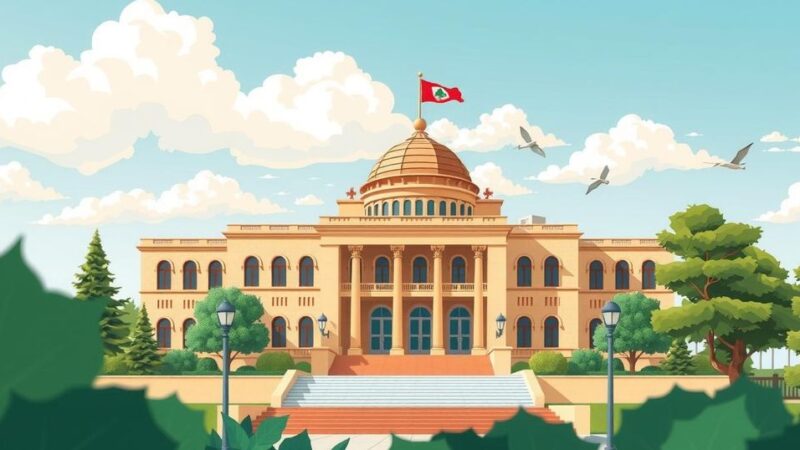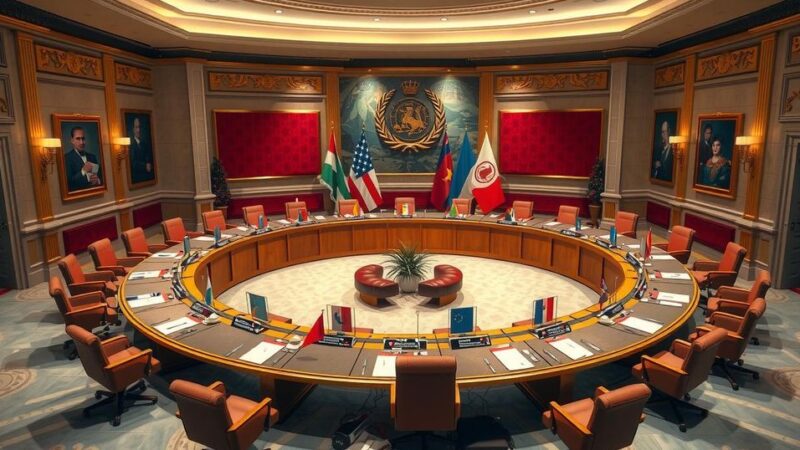President Trump proposed US ownership of the Gaza Strip and the relocation of its Palestinian residents, suggesting the area could become a prosperous hub. This announcement met widespread criticism, including accusations of ethnic cleansing from US lawmakers. The long-term viability of Gaza remains in question, with experts predicting it may remain uninhabitable for 10-15 years due to extensive damage.
In a surprising proposal, US President Donald Trump announced the United States intends to take “ownership” of the Gaza Strip, suggesting the relocation of Palestinians to neighboring countries and the redevelopment of the area. At a joint press conference with Israeli Prime Minister Benjamin Netanyahu, Trump described Gaza as a potential “Riviera of the Middle East,” a vision met with heavy criticism. US Secretary of State Marco Rubio supported the idea, emphasizing a need for Gaza to be liberated from Hamas.
Democratic leaders, including Congresswoman Rashida Tlaib, strongly condemned Trump’s plan, characterizing it as akin to “ethnic cleansing.” Tlaib highlighted the president’s alliance with Netanyahu while lamenting the displacement of Palestinians. Meanwhile, US Middle East envoy Steve Witkoff noted that Gaza may remain uninhabitable for up to fifteen years, underscoring the immense destruction the region has suffered.
Protesters, including anti-Zionist orthodox Jews, gathered outside the White House during Trump’s announcement. The protests underscored widespread public opposition to the notion of forcibly removing Palestinians. Concerns mount regarding implications for international law, with accusations of potential violations and human rights abuses arising from Trump’s comments on displacing population groups.
Trump asserted the necessity of US leadership in revamping Gaza, stating that the area has been characterized by “death and destruction.” Contrarily, the Saudi government rebuked any attempt to displace Palestinians. Various dignitaries expressed alarm regarding the feasibility and moral implications of Trump’s plan, with many Democrats and some Republicans declaring the proposal reckless and dangerous, potentially leading to further conflict in the region.
The president’s approach included hints at sending US troops to secure the area, a proposition eliciting concern from several quarters about the ramifications of military involvement. As Trump claimed to have high-level support for his ownership plan, questions remained regarding his assertions and their impact on ongoing peace efforts in the volatile region. Netanyahu praised Trump’s initiative, likening it to a transformative opportunity for both Israel and Gaza, while calling for the completion of military efforts in the region.
As the situation evolves, the international community watches closely, weighing the implications of Trump’s statements on peace efforts and the humanitarian crisis in Gaza. The reconfiguration of long-standing policies towards the Palestinian people remains a pivotal issue amidst rising tensions in the Middle East.
The recent announcement by President Donald Trump regarding the US taking over the Gaza Strip has ignited significant controversy. This follows a backdrop of longstanding tensions in the region, particularly surrounding the Israeli-Palestinian conflict. With considerable destruction in Gaza and the plight of its 1.8 million residents, opinions diverge sharply over how best to address the humanitarian crisis and political instability.
In summary, President Trump’s proposal to take ownership of Gaza while suggesting the relocation of Palestinians has drawn widespread criticism, labeling the idea as potentially comparable to ethnic cleansing. The US administration, supporters, and detractors continue to debate the legality and morality of such actions, complicating already intricate international relations in the Middle East. As protests arise and responses pour in, the future of Gaza remains uncertain amidst these developments.
Original Source: www.theguardian.com






